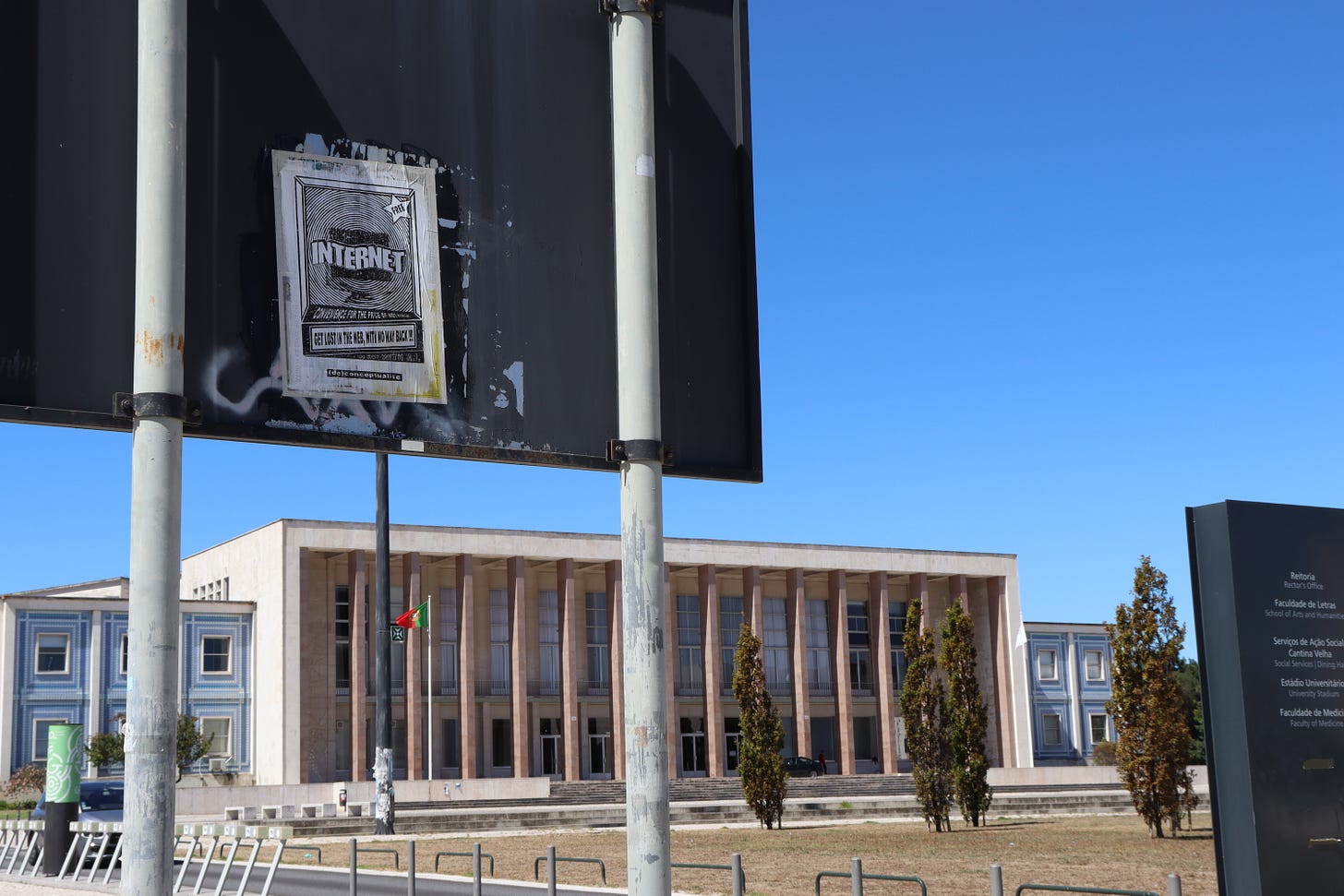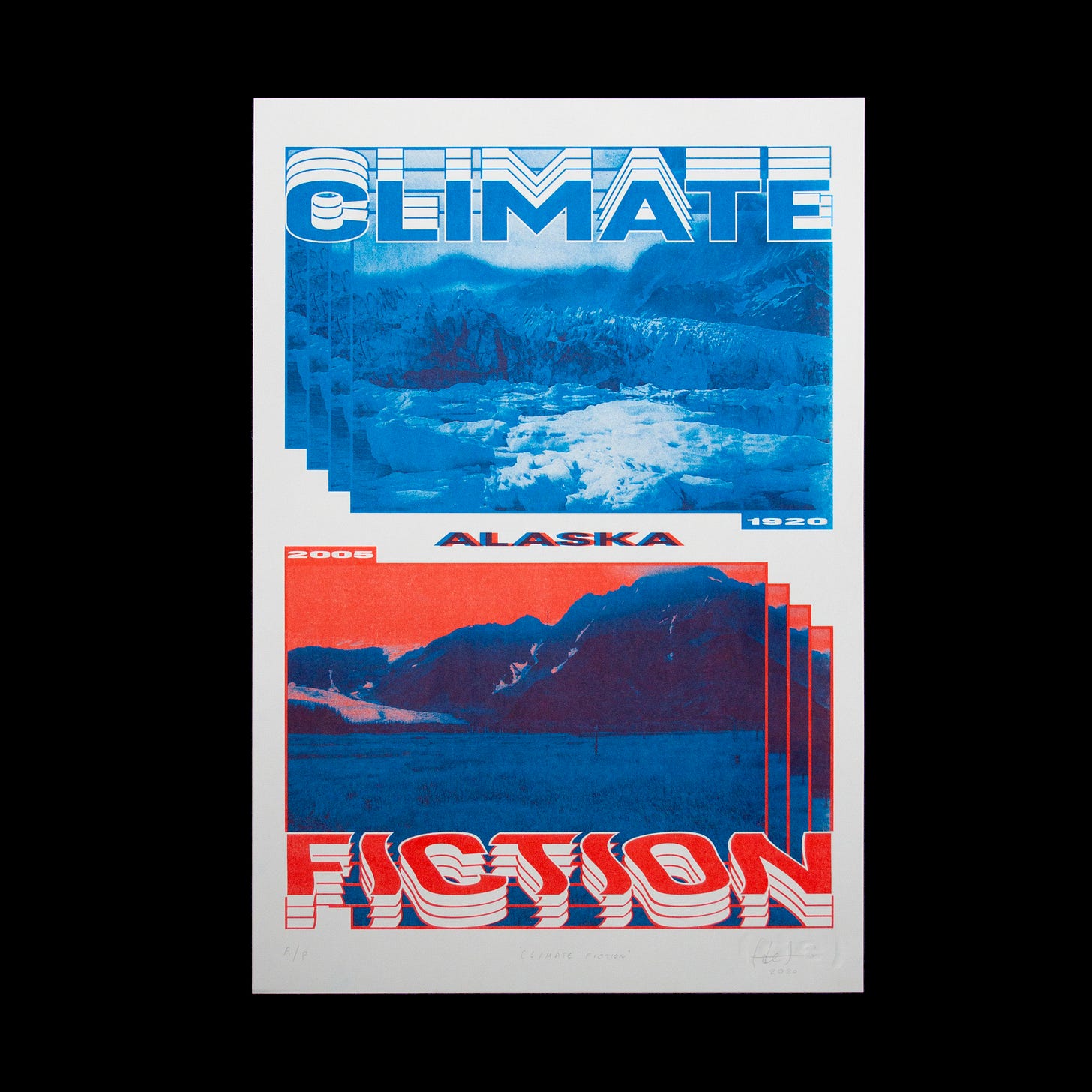Framing (de) as ‘constructive vandalism’ lead me to question the act of creation of new work and how I can be more intentional about it. Not that everything needs to have a sound reasoning or a strict rationale for existence but lately I’ve been trying to think more of my work as marketeers think of campaigns.
Don’t get me wrong, I generally hate the idea of comparing art with business and the common blog posts that come with that comparison with headlines like: “Your art is your business, so treat it like that with these 10 tips on bla bla bla”… but for the sake of trying to subvert dominant narratives, one has to use the tools that created those narratives in the first place. And a big part of that passes through thinking about the artwork not as the final output but as part of a bigger intervention.

This is all but new. Particularly in the spectrum of politically oriented art, the change processes the artwork sets in motion can become more important than the artwork itself. In these cases, the aesthetic or symbolic qualities of the imagery take a backseat to the potential impact it can have. This can be seen in the work of The Yes Men who often rejected calling themselves artists, the work of the Situationists and more specifically of the artist collective Gran Fury, formed from the AIDS activist group ACT-UP, whose work wants to “...fight for attention as hard as Coca-Cola”.
As I look at it, a big part of this mindset means thinking more carefully about the distribution of the work. While one might hope that a gallery visitor will get a transformative experience by what’s being displayed, it’s not always the case that people will gravitate around an artwork and start to engage in meaningful discussions around the issues that the artist wanted to raise awareness to... (not to talk about the elitism surrounding galleries and the art world, or the patronising spectator-artist dynamic where the artist, through the artwork, ‘offers’ an unique perspective on the issue).
This is not not to dismiss the gallery as a valid platform. Nonetheless, it’s important to think carefully of where the artwork lives after it has been created. For instance, the same screenprinted poster can have a plurality of afterlives. I can place it in a gallery, choose to post it on instagram, maybe wheatpaste it on the street, with luck sell it to someone that will place it over the living room couch, submit it to a publication, make it as part of an Extinction Rebellion campaign,... the list is endless. But more importantly, each one of these options has certain qualities that will alter how the work is read and the impact it will have.
To make it more specific, I’m going to use an example from my work. To give a brief context, ‘Climate Fiction’ is a set of risograph prints with the intention of partly to experiment with the technique and partly to bring more awareness to the effects of climate change. The idea was shamelessly appropriated by NASA’s series Images of Change that compares photographs of the same place but in different moments in time to showcase the effects of a changing climate.
In the end, I can safely say that it’s a nice print and certainly a nice first try at riso printing. But its impact? I feel that it doesn’t really go beyond that.
In terms of the intention of the artwork, it aimed to make the effects of climate change more tangible and specific. Timothy Morton describes climate change as a perfect example of what it calls ‘Hyperobjects’, or “entities of such vast temporal and spatial dimensions that they defeat traditional ideas about what a thing is in the first place”. So, taking this into account, it’s safe to say that the intention itself was not too far off and was in the right track.
One could also question the aesthetic choices and whether they work in favour or against the message it’s trying to portray. But I think the use of the risograph was quite appropriate as they create an overlay effect and contrast that worked quite well with the initial intention of portraying change.
However, for me, the problem is not on the artwork itself or the initial aim, but on the lack of thinking about what happens next. In other words, how could I turn this image into a larger intervention?
I have no answer for this, but I leave here a piece from The Yes Men unpacking how their work might act as a trigger for change and a snippet from a manifesto from the art collective Brandalism:
“(...)We, who are you, have come to realise that
to dream is the beginning,
all that remains is action,
to reclaim the space to express.”
Anyway, thank you for reading. And if you’ve been liking the newsletter so far feel free to share it :)



